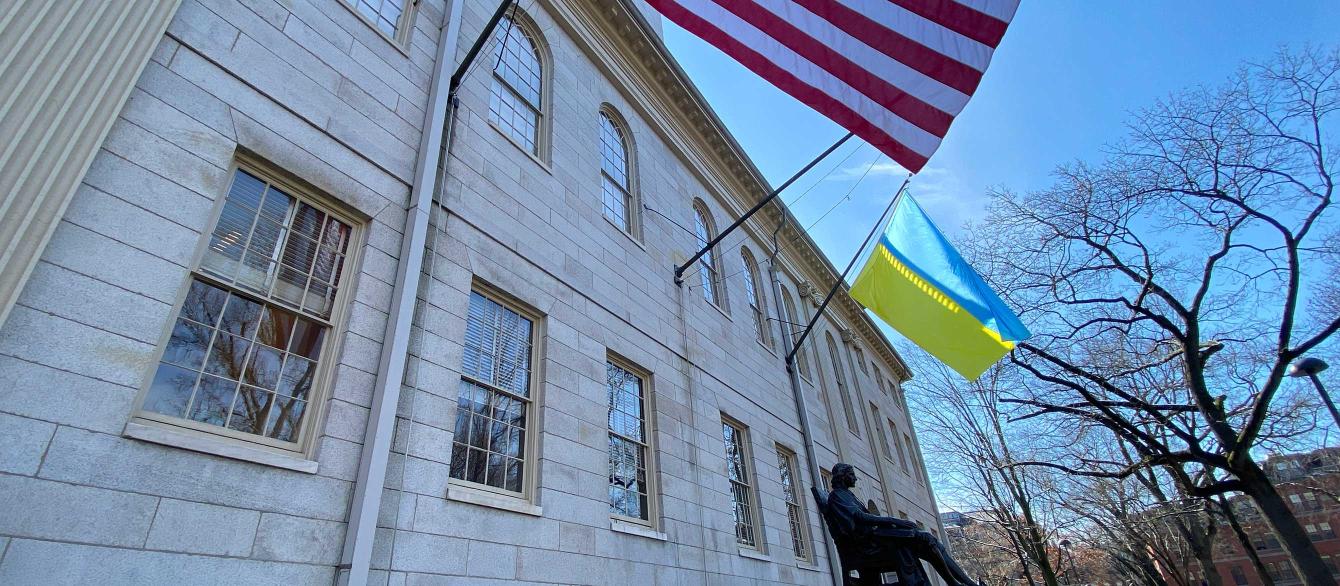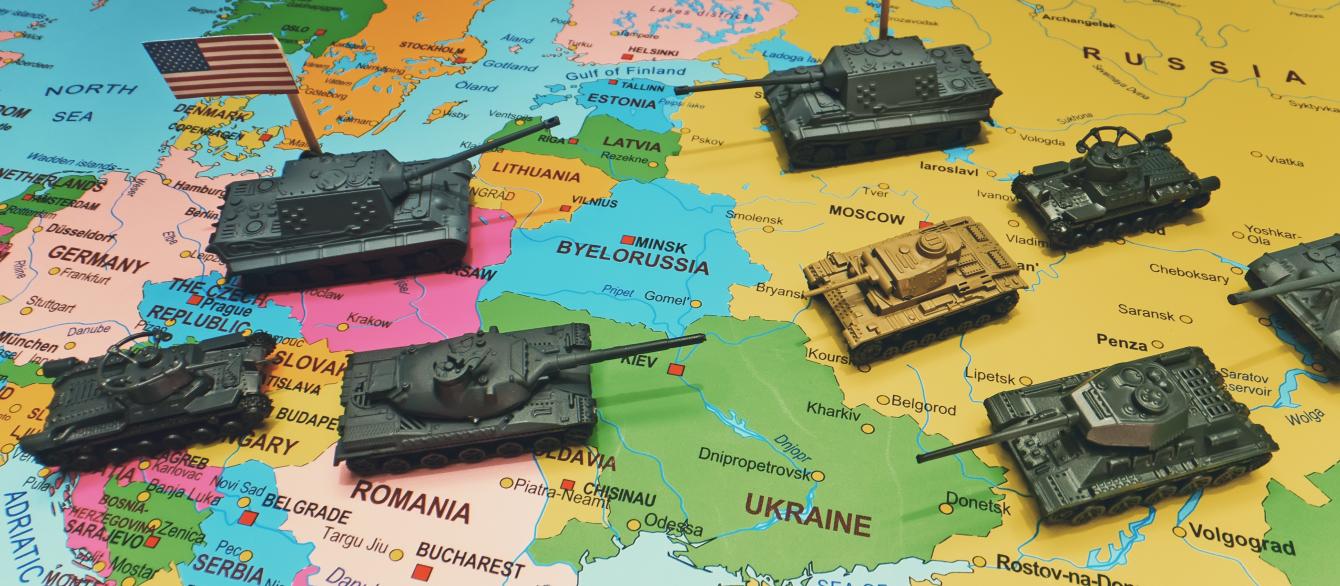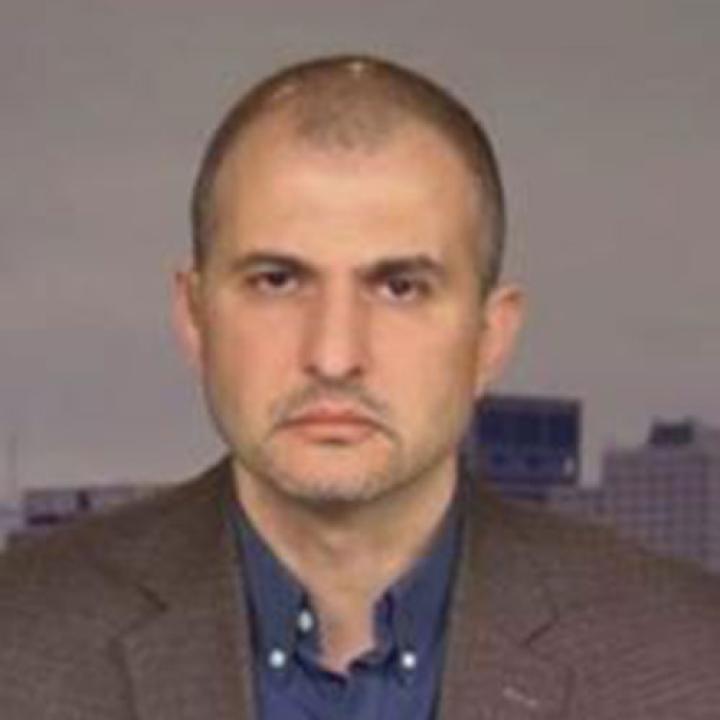This blog post was originally published by Russia Matters, a Harvard Kennedy School project led by the author, under the title "US Intel Sticks to View of Russia as Adversary Prepared to Pay ‘Very High Price’ to Prevail in Ukraine."
“When the nation’s intelligence chiefs go before Congress ... to provide their first public ‘Worldwide Threat Assessment’ of President Trump’s second term, ... do they stick with their long-running conclusion about President Vladimir V. Putin of Russia, that his goal is to crush the Ukrainian government and ‘undermine the United States and the West?’ Or do they cast Mr. Putin in the terms Mr. Trump and his top negotiator with Russia are describing him with these days: as a trustworthy future business partner who simply wants to end a nasty war, get control of parts of Ukraine that are rightly his and resume a regular relationship with the United States?” That was the central question that the New York Times’ David Sanger and Julian Barnes asked in their March 24 preview of WTA-2025, entitled “Is Russia an Adversary or a Future Partner?”
The release of WTA-2025 on March 25 answered their question. “Russia, China, Iran and North Korea—individually and collectively—are challenging U.S. interests in the world by attacking or threatening others in their regions ... Growing cooperation between and among these adversaries is increasing their fortitude against the United States, the potential for hostilities with any one of them to draw in another and pressure on other global actors to choose sides,” according to the assessment. The document, presented by director of national intelligence Tulsi Gabbard and CIA director John Ratcliffe to the Senate’s intelligence committee, also had a section entitled “Adversarial Cooperation,” which opened with the proposition that “cooperation among China, Russia, Iran and North Korea has been ... reinforcing threats from each of them individually while also posing new challenges to U.S. strength and power globally,” and which described Russia as a “catalyst for the evolving ties” between this quartet.
In her opening statement, DNI Gabbard—who has been criticized for “comments sympathetic to Russia”—did not refer to Moscow explicitly as an adversary, but repeatedly referred to challenges presented by Russia to the U.S. As did the WTA-2025. “Regardless of how and when the war in Ukraine ends, Russia’s current geopolitical, economic, military and domestic political trends underscore its resilience and enduring potential threat to U.S. power, presence and global interests,” the assessment states. “China stands out as the actor most capable of threatening U.S. interests globally, though it is also more cautious than Russia, Iran and North Korea,” according to the WTA-2025, which explicitly refers to Russia 112 times, almost double the Biden team’s WTA-2024, which had 78 such references and which also described Russia as an adversary.1
Other nuggets I found in the WTA-2025 include the U.S. intelligence community’s collective view that Ukrainian President Volodymyr Zelenskyy and Putin “probably still see the risks of a longer war as less than those of an unsatisfying settlement." For Russia, "positive battlefield trends allow for some strategic patience," while for Ukraine, "conceding territory or neutrality to Russia without substantial security guarantees from the West could prompt domestic backlash and future insecurity,” according to the document.
The 2025 assessment acknowledges that over the past year, "Russia has seized the upper hand in its full-scale invasion of Ukraine and is on a path to accrue greater leverage to press Kyiv and its Western backers to negotiate an end to the war that grants Moscow concessions it seeks."
“Even though ... Putin will be unable to achieve the total victory he envisioned when initiating the large-scale invasion in February 2022, Russia retains momentum as a grinding war of attrition plays to Russia’s military advantages,” according to the WTA-2025. It predicts that "this grinding war of attrition will lead to a gradual but steady erosion of Kyiv’s position on the battlefield, regardless of any U.S. or allied attempts to impose new and greater costs on Moscow.” The assessment warns that “Putin appears resolved and prepared to pay a very high price to prevail in what he sees as a defining time in Russia’s strategic competition with the United States, world history and his personal legacy." It also notes that "most Russian people continue to passively accept the war, and the emergence of an alternative to Putin probably is less likely now than at any point in his quarter-century rule."
See these and other nuggets I found in the WTA-2025 in reference to Russia, organized by topic in alphabetical order, below.
Arctic:
- “Russia controls about half of all Arctic coastline and views the region as essential to its economic well-being and national security. Moscow wants to further develop its Arctic oil and gas reserves and position itself to reap benefits from expected increases in maritime trade. Russia has concerns about increasing economic and military competition with Western countries in the region.”
- “The war in Ukraine has sapped Russia’s finances and available military resources to fulfill its Arctic ambitions, prompting Russia to seek a closer partnership with China in the Arctic, and welcoming other non-Western countries’ increasing involvement, to offset NATO countries’ perceived advantages.”
- “Russia’s interest in Greenland is focused mainly on its proximity to strategically important naval routes between the Arctic and Atlantic Oceans—including for nuclear-armed submarines—and the fact that Greenland hosts a key U.S. military base.”
- “China has similar aims in global shipping and resource access, including in the Arctic, where melting sea ice is creating opportunities for expanded maritime transport and energy exploitation, especially along the Northern Sea Route (NSR) off Russia’s coast.”
- “China is using its increased cooperation with Russia to attain a stronger presence in the Arctic and legitimize its influence there. One area of cooperation is China’s production of icebreaker ships that enable safe passage through Arctic waters. ”
Cyber:
- “Russia’s advanced cyber capabilities, its repeated success compromising sensitive targets for intelligence collection and its past attempts to pre-position access on U.S. critical infrastructure make it a persistent counterintelligence and cyber attack threat. Moscow’s unique strength is the practical experience it has gained integrating cyber attacks and operations with wartime military action, almost certainly amplifying its potential to focus combined impact on U.S. targets in time of conflict.”
- “Russia has demonstrated real-world disruptive capabilities during the past decade, including gaining experience in attack execution by relentlessly targeting Ukraine’s networks with disruptive and destructive malware.”
Russia’s ability to withstand Western sanctions:
- “Russia has shown it can navigate substantial economic challenges resulting from the ongoing drains of the war, Western cost imposition and high inflation and interest rates, for at least the near term by using financial and import substitution workarounds, maintaining low debt and continuing investments in the defense-industrial base. Russia’s economy remains the fourth largest in the world (based on GDP at purchasing power parity).”
Russian-Ukrainian war and its implications:
- “Russia has paid a heavy price in blood, treasure and loss of international reputation and foreign policy options because of its large-scale invasion of Ukraine. President Putin upended two decades of Russia’s geopolitical resurgence, created new threats to its external and internal security and strained its economic and military potential, making it more reliant on China and other like-minded partners like North Korea.”
- “Russia’s military has suffered more casualties in Ukraine than in all of its other wars since World War II (750,000-plus dead and wounded), and its economy faces significant long-term macroeconomic headwinds and is increasingly dependent on China. ”
- “Russia’s aggression has strengthened European unity and prompted Finland and Sweden to join NATO. Efforts by Armenia, Moldova and some Central Asian states to seek alternative partners highlight how the war has hurt Moscow’s influence, even in the post-Soviet space, and derailed Putin’s vision of a greater Eurasian union.”
- “Russia in the past year has seized the upper hand in its full-scale invasion of Ukraine and is on a path to accrue greater leverage to press Kyiv and its Western backers to negotiate an end to the war that grants Moscow concessions it seeks. Continuing the Russia-Ukraine war perpetuates strategic risks to the United States of unintended escalation to large-scale war, the potential use of nuclear weapons.”
- “Russia views its ongoing war in Ukraine as a proxy conflict with the West, and its objective to restore Russian strength and security in its near abroad against perceived U.S. and Western encroachment has increased the risks of unintended escalation between Russia and NATO. The resulting heightened and prolonged political-military tensions between Moscow and Washington, coupled with Russia’s growing confidence in its battlefield superiority and defense industrial base and increased risk of nuclear war, create both urgency and complications for U.S. efforts to bring the war to an acceptable close.”
- “The war in Ukraine has afforded Moscow a wealth of lessons regarding combat against Western weapons and intelligence in a large-scale war. This experience probably will challenge future U.S. defense planning, including against other adversaries with whom Moscow is sharing those lessons learned.”
- “Russia has proven adaptable and resilient, in part because of the expanded backing of China, Iran and North Korea.”
- “The Ukraine conflict has led to improvements in some Russian military capabilities. For example, Russia’s initial use of EW and unmanned systems was lacking but it adapted and innovated using EW to more effectively interfere with Ukrainian use of radar and GPS and unmanned aerial vehicles (UAVs).”
- “Even though Russian President Putin will be unable to achieve the total victory he envisioned when initiating the large-scale invasion in February 2022, Russia retains momentum as a grinding war of attrition plays to Russia’s military advantages. This grinding war of attrition will lead to a gradual but steady erosion of Kyiv’s position on the battlefield, regardless of any U.S. or allied attempts to impose new and greater costs on Moscow.”
- “President Vladimir Putin appears resolved and prepared to pay a very high price to prevail inwhat he sees as a defining time in Russia’s strategic competition with the United States, world history and his personal legacy. Most Russian people continue to passively accept the war, and the emergence of an alternative to Putin probably is less likely now than at any point in his quarter-century rule.”
- “Regardless of how and when the war in Ukraine ends, Russia’s current geopolitical, economic, military and domestic political trends underscore its resilience and enduring potential threat to U.S. power, presence and global interests.”
Russian-Ukrainian peace talks prospects:
- “Both Putin and Ukrainian President Volodymyr Zelenskyy are interested in continuing discussions with the United States on how to end the war and have shown a willingness to test partial ceasefires. Nonetheless, Putin probably is attuned to the potential for protracted conflict to drag down the Russian economy and prompt undesired escalation with the West, and Zelenskyy probably understands that his position is weakening, the future of Western assistance is uncertain, and a ceasefire may ultimately become a necessary recourse. However, both leaders for now probably still see the risks of a longer war as less than those of an unsatisfying settlement. For Russia, positive battlefield trends allow for some strategic patience, and for Ukraine, conceding territory or neutrality to Russia without substantial security guarantees from the West could prompt domestic backlash and future insecurity.”
Russia’s cooperation with China, Iran and North Korea:
- “The PRC is providing economic and security assistance to Russia’s war in Ukraine through support to Moscow’s defense industrial base, including by providing dual-use material and components for weapons.”
- “For at least a decade, Beijing and Moscow have used high-profile, combined military activities primarily to signal the strength of the China–Russia defense ties. This relationship has deepened during the Russia-Ukraine war, with China providing Russia dual-use equipment and weapons components to sustain combat operations. ”
- “Russia has increased its oil and liquefied natural gas (LNG) exports to China in an effort to maintain revenues in the face of sanctions by Western states. ”
- “The two countries [China and Russia] probably will expand combined bomber patrols and naval operations in the Arctic theater to signal their cooperation and make it more concrete. In November, they also agreed to expand their cooperation on developing the NSR for its economic potential and as an alternative to Western dominated routes.”
- “Western efforts to isolate and sanction Russia have accelerated its investments in alternative partnerships and use of various tools of statecraft to offset U.S. power, with China’s backing and reinforcement. Russia’s relationship with China has helped Moscow circumvent sanctions and export controls to continue the war effort, maintain a strong market for energy products, and promote a global counterweight to the United States, even if at the cost of greater vulnerability to Chinese influence.”
- “Cooperation among China, Russia, Iran and North Korea has been growing more rapidly in recent years, reinforcing threats from each of them individually.”
- “Russia, China, Iran and North Korea—individually and collectively—are challenging U.S. interests in the world by attacking or threatening others in their regions, with both asymmetric and conventional hard power tactics, and promoting alternative systems to compete with the United States, primarily in trade, finance and security. They seek to challenge the United States and other countries through deliberate campaigns to gain an advantage, while also trying to avoid direct war. Growing cooperation between and among these adversaries is increasing their fortitude against the United States, the potential for hostilities with any one of them to draw in another, and pressure on other global actors to choose sides.”
- “Russia is also increasing military cooperation with Iran and North Korea, which will continue to help its war effort and enhance U.S. adversary cooperation and collective capacity.”
Russia’s foreign policy, including interactions with the U.S.:
- “Moscow is increasingly willing to play spoiler in Western-centric forums such as the U.N. as well as use non-Western organizations like the Brazil, Russia, India, China and South Africa (BRICS) group to press policies such as de-dollarization.”
- “Russia will continue to be able to deploy anti-U.S. diplomacy, coercive energy tactics, disinformation, espionage, influence operations, military intimidation, cyberattacks and gray zone tools to try to compete below the level of armed conflict and fashion opportunities to advance Russian interests.”
- “Moscow uses influence activities to counter threats, including by stoking political discord in the West, sowing doubt in democratic processes and U.S. global leadership, degrading Western support for Ukraine, and amplifying preferred Russian narratives. Moscow’s malign influence activities will continue for the foreseeable future and will almost certainly increase in sophistication and volume.”
- “Moscow probably believes information operations efforts to influence U.S. elections are advantageous, regardless of whether they affect election outcomes, because reinforcing doubt in the integrity of the U.S. electoral system achieves one of its core objectives.”
Russia’s military capabilities, including its nuclear arsenal:
- “Russia has the largest and most diverse nuclear weapons stockpile that, along with its deployed ground-, air- and sea-based delivery systems, could inflict catastrophic damage to the Homeland. Russia has developed a more modernized, mobile and survivable strategic nuclear force that is intended to circumvent or neutralize future augmented U.S. missile defense and ensure deterrence through reliable retaliatory strike potential. In addition, Russia’s vast arsenal of non-strategic nuclear weapons helps it to offset Western conventional superiority and provide formidable escalation management options in theater war scenarios.”
- “Russia continues efforts to modernize its nuclear weapons capabilities in the face of multiple failed tests of new systems.”
- “Russia’s CBW threat is expanding. Russian scientific institutes continue to research and develop CBW capabilities, including technologies to deliver CBW agents.”
- “Russia’s sizable ground force losses in the war have done little to undermine the strategic pillars of its military power, to include its diverse and robust nuclear deterrent and asymmetric capabilities, particularly in counterspace and undersea warfare. Russia’s air and naval forces remain intact, with the former being more modern and capable than at the start of the invasion. Russia is developing a growing arsenal of conventional capabilities, such as theater strike weapons, to target the Homeland and deployed forces and assets abroad—and to hold U.S. allies at risk—during crisis and wartime. Russia’s advanced WMD and space programs threaten the Homeland, U.S. forces and key warfighting advantages.”
- “Moscow’s massive investments in its defense sector will render the Russian military a continued threat to U.S. national security, despite Russia’s significant personnel and equipment losses—primarily in the ground forces—during the war with Ukraine. Russia’s air and naval forces, despite suffering some losses and expending substantial quantities of precision-guided munitions, remain capable of providing Moscow with regional and global power projection forces, while Russia’s nuclear and counterspace forces continue to provide it with strategic deterrence capability.”
- “Russia possesses long-range precision strike capability, most notably submarines and bombers equipped with LACMs and antiship cruise missiles, that can hold the Homeland at risk.”
- “Moscow has increased its defense budget to its heaviest burden level during Putin’s more than two decades in power and taken measures to reduce the impact of sanctions on its military and defense industry.”
- “Moscow will contend with long-term challenges such as troop quality and corruption, and a fertility rate below what is needed for replacements, but its investments in personnel recruitment and procurement should allow it to steadily reconstitute reserves and expand ground forces in particular during the next decade.”
- “Russia’s few domestic microelectronics manufacturers have only mastered production of chips down to the 65nm level and has goals of mass producing 28nm chips by 2030, significantly behind global leaders.”
- “While largely cut-off from Western supply chains, Russia has significantly expanded and deepened cooperation in several technical sectors with international partners. Russia seeks to further align its S&T efforts with China and BRICS allies in areas such as AI development and governance and semiconductor production to advance its own capabilities as well as broadly decrease Western influence.”
- “Moscow’s rising defense spending and investments in defense-industrial capacity will continue to enable a high level of production of critical capabilities—such as artillery, long-range missiles, one-way attack UAVs, and glide bombs—and ensure Russia retains a firepower advantage over Ukraine.”
Space:
- “Russia continues to train its military space elements and field new antisatellite weapons to disrupt and degrade U.S. and allied space capabilities. It is expanding its arsenal of jamming systems, DEWs, on-orbit counterspace capabilities and ASAT missiles designed to target U.S. and allied satellites.”
Terrorism:
- “ISIS-K in South Asia is the group’s branch most capable of carrying out external terrorist attacks and maintains the intent to conduct attacks in South and Central Asia, and globally, although its capabilities vary. ISIS-K’s mass casualty attacks in Russia and Iran in 2024, as well as arrests of ISIS-K supporters in Europe and the United States, highlight the group’s expanding capability beyond South Asia and ability to inspire individuals to conduct attacks abroad.”
All opinions expressed herein are solely the author's, unless otherwise noted.
Footnotes:
- “Russia’s war of aggression against Ukraine has resulted in enormous damage at home and abroad, but Russia remains a resilient and capable adversary across a wide range of domains and seeks to project and defend its interests globally and to undermine the United States and the West,” WTA-2024 said.






